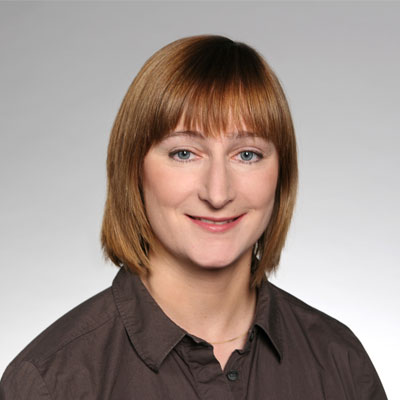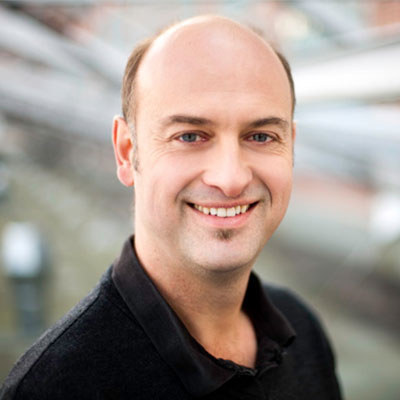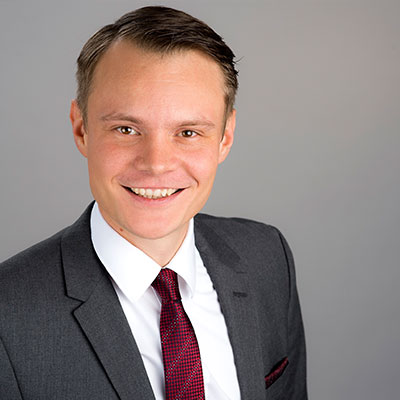Abstracts & Speaker
It’s already here – additive & adaptive manufacturing in advanced packaging
Christine Kallmayer and Karl-Friedrich Becker
Fraunhofer-Institut fuer Zuverlaessigkeit und Mikrointegration IZM
Abstract
In advanced packaging successful innovations are moving fast from research labs into volume applications. Here maximum miniaturization und increased packaging density can be used to build high performance top notch devices. For niche applications such as medical, industrial or avionic/space applications, advanced packaging approaches would be of maximum interest as they are often enablers for attractive solutions. But an implementation for technology demonstrators and small and medium volume is typically too costly. As a research institute, Fraunhofer IZM, often needs to use advanced packaging to build performance demonstrators – and often additive and adaptive manufacturing is key to do so. This is also true for the combination of additive technologies and conformable electronics, where this allows completely new functionalities – e.g. smart 3D surfaces as innovative human-machine interfaces for products from washing machines to cars. Within our presentation tools will be introduced and some examples will be shown, where additive and adaptive technology helped to built performance demonstrators.

Christine Kallmayer
Fraunhofer-Institut fuer Zuverlaessigkeit und Mikrointegration IZM
Christine Kallmayer received a diploma in experimental physics at the University of Kaiserslautern in 1994. Afterwards she worked as a research scientist at the research center „Technologien der Mikroperipherik“ at the Technical University of Berlin. Her main field of activity was the development and investigation of interconnection technologies with the Au-Sn metallurgy for different applications, e.g. optoelectronics, chip on flex, chip scale packages and the reliability of the metallurgical system. Since 1998 she is responsible for the group „System on Flex“ at Fraunhofer IZM. The main working areas are new technologies for flip chip integration on and in flex by soldering or adhesive bonding. Especially technologies for ultrathin chips are developed and investigated. The group is also developing new flexible substrate materials, e.g. based on thermoplastic polymers, together with optimized assembly technologies. A current research focus is on stretchable and conformable electronics based on textiles as well as elastomers.

Karl-F. Becker
Fraunhofer-Institut fuer Zuverlaessigkeit und Mikrointegration IZM
Karl-Friedrich Becker studied materials science at Technical University of Berlin with a focus on polymer physics; he finished his studies in 1995 with a degree Dipl.-Ing. Materials Science. In 1996, he joined Fraunhofer IZM, since 2001, he is heading the group Assembly & Encapsulation in the department System Integration and Interconnect Technologies. Since 2010, he is deputy head of the department. His field of research is process development for microelectronics integration, process qualification using both nondestructive and destructive tools and polymer encapsulant analysis using a wide variety of analysis methods, as well as assembly processes for multisensor modules / SiPs. He co-authored more than 10 patents in the area of microelectronics packaging. In 2007, he received the Fraunhofer IZM research award. He is member of IMAPS and IEEE.
Direct, selective and additive copper formation on plastic compounds and its use cases in electronics packaging
Florian Roick1, Simon Heitmann1, Ruud deWit²
1LPKF Laser & Electronics AG, 30827, Garbsen, GERMANY
2Henkel Belgium NV, Semiconductor, Sensor & Consumer Electronics Assembly Material
Abstract
In traditional electronics manufacturing the formation of metal layers has always been and will continue to be a key concern for any designer, process- and back-end specialist.The formation of conductors to create a connection between two points relies on two process steps.
First, the additive formation of the full surface copper cladding using copper sheet lamination, glueing, bonding or seed layer formation followed by electroplating. In the case of (modified) semi additive processing – (m)SAP – and substrate like PCBs – SLPs –the full surface copper seed layer formation. And second, the subtractive copper processing to carve out the electronic circuitry from the copper cladding. In the vast majority of high volume manufacturing this involves resist coating (masking), lithography, etching or electroplating (SAP, mSAP and SLP), resist stripping and seed layer removal (flash etching).
This multitude of processes pose a big challenge for any process control under the light of Ishikawa’s 5M1P (method, mother nature, people, measurement, machine, materials). This presentation highlights a copper formation technology with reduced complexity and limited impact on the 5M1P’s, compared to purely subtractive and even semi additive processing technologies.
This additive copper formation technology is called Laser Direct Structuring (LDS) for general electronics manufacturing and its evolution into Active Mold Packaging (AMP) for IC and SiP packaging. With LDS and AMP, additional metal layers become directly, selectively and purely additively available on the otherwise undeveloped and passive real estate of the plastic compound used for housing and protection. And convert the compound into an active carrier of package functionality.
This presentation shows the evolution of the LDS/ AMP technology from its initial breakthroughs to today’s applications and use cases for IC and SiP packaging. It will add knowledge about practical design rules and guidelines and the technology roadmap for the coming years.

M. Sc. Florian Roick
Business Development Manager Active Mold Packaging
Born in 1981. He holds a degree as Bachelor of Science in Applied Physics from Dublin Institute of Technology. And a degree as Master of Science in Electrical Engineering with focus on laser systems, laser physics and microsystems engineering from Hochschule Bremen.
Since 2006 employed at LPKF Laser & Electronics AG, until 2008 as application engineer for the StencilLaser business unit. Between 2008 and 2019 strategic product manager responsible for aligning the product portfolio with the needs and requirements of the PCB and SMT markets.
Since 2019 Business Development Manager for LPKF’s Active Mold Packaging technology. That is to electrically functionalize the real-estate of the epoxy mold compound on the base of LPKF’s patented Laser Direct Structuring (LDS) technology.
Co-inventor of the parametric stick-in and co-author of a variety of publications.
Inkjet printing in manufacturing
Wouter Brok, Suss Microtec
Abstract
Digital methods of manufacturing enjoy a large amount of interest because of the many obvious benefits they can bring. It is not surprising that inkjet printing, which is a technology that has been well developed in the graphical industry, is well positioned to proliferate into other industries and indeed finds its way as a manufacturing technology for many products, even in electronics applications. In this presentation an update will be given of the role of inkjet printing in this landscape. We will show how the unique capabilities of inkjet printing qualify it for new ways of manufacturing. The benefits can be diverse and range from enabling things that were not easily possible before, to more basic effects such as decreasing cost through floor space, labor or waste management. Specific examples will be given for the manufacturing of printed circuit boards and semiconductors.
Wouter Brok
Suss Microtec
Dr.ir. W.J.M. (Wouter) Brok is Innovation Manager for PiXDRO inkjet products at SUSS MicroTec Netherlands B.V.. He studied applied physics and earned a Ph.D. in gas discharge physics. In 2007 Wouter joined OTB Engineering. At this company he worked on systems and processes for manufacturing of different solar cell concepts. Through a series of acquisitions, this company eventually became SUSS MicroTec Netherlands B.V. in 2020. His present focus is on industrial inkjet printing for applications in various fields, such as semiconductors, printed circuit boards and photovoltaics.
Aerosol Printing Performance for Electronics Packaging including ceramic substrates
Keicher, M. Essien, Y. Li and C. Buksa
Integrated Deposition Solutions, Inc.
Abstract
Integrated Depostion Solutions (IDS) has developed the next generation aerosol printing technology (trademarked NanoJet™) for printed electronics and bioprinting applications. This talk will cover recent improvements aimed at providing a viable print option for features from 10µm to 100µm in width for production applications (on various substrates and printed with various materials using solvent and water based inks). Data will be presented showing printed line widths and measured conductivity for continuous printing of conductors without operator intervention. Clean printed line edge quality will be shown and methods used to achieve these results will be discussed. Printed circuits for implantable medical devices requiring inductive power coupling will be discussed. In addition, recent printing results for inks such as molybdunum and antimony for high temperature sensors on ceramic devices will be presented.
David Keicher
Integrated Deposition Solutions, Inc.
Mr. Keicher is a proven leader and innovator in the field of Additive Manufacturing (AM). Since 1993, he has been involved in research, development and commercialization of several key AM technologies that continue to drive the industry today. Mr. Keicher was the founder of Optomec and was instrumental in commercializing both the LENS and Aerosol Jet printing processes at Optomec. Mr. Keicher’s R&D efforts have significantly impacted AM in the area of printed electronics. Most recently, Mr. Keicher has been able to leverage his experience and knowledge of aerosol printing to be able develop and commercialize the next generation aerosol printing technology trademarked as NanoJet. This next generation aerosol printing process is gaining acceptance in industry as the gold standard for aerosol printing. These ongoing efforts will continue to impact the growth and implementation of printed electronics processes worldwide.
CerAMfacturing of high performance ceramics for applications as substrates and packaging.
Uwe Scheithauer
Abstract
High-performance ceramic materials exhibit significantly improved mechanical, chemical, and thermal stability, as well as significantly higher thermal conductivity, compared to polymeric materials. Compared to metallic materials, ceramics are mostly electrically insulating, lighter, and have less effect on signal transmission.
This combination of properties predestines the use of these materials as substrate and packaging materials. Additive manufacturing of ceramics (CerAMfacturing) allows the realization of highly complex geometries and the integration of additional functions (e.g. cooling). Further functionalization can be realized via thick-film technologies such as screen printing. The presentation will demonstrate the potential using various examples of aluminum oxide, aluminum nitride and silicon nitride.
Uwe Scheithauer
Fraunhofer IKTS
The mechanical engineering graduate is team leader for additive manufacturing at Fraunhofer IKTS and responsible for six different AM technologies with a focus on ceramic materials, but also on hard metals, glasses and multi-material components. Together with a team of ten, he not only qualifies new materials for these AM technologies, but also develops and optimizes the necessary process technology and, if necessary, the used devices.
Additive manufacturing for microelectronic devices
Stefania Minnella
HP Inc.
Abstract
Additive manufacturing for microelectronic devices: from today’s production of supportive mechanical parts, covers, jigs and fixtures, to tomorrow’s 3D printing of integrated electrical circuits
Stefania Minnella
HP Inc.
Her professional background includes Powder bed fusion, Laser Metal Fusion, Fused Deposition Modeling and Design for Manufacturing expertise.
Everything on 3D Printed RF Devices with AME Technology
Ziv Cohen
NanoDimensions
Abstract
This webinar will dive deep into the world of 3D printed RF devices. From IoT-Metamaterial Antennas with redesigned Electromagnetic Band Gaps to RF Antenna Domes and 5G Antennas, 3D printing with AME Technology is the future of the electronics industry.
As AME (Additive Manufacturing Electronics) brings additional design possibilities that are not attainable with traditional manufacturing processes, the advantages of AME are:
- Rapid Prototyping
- Fully Integrated Devices
- Miniaturization of Parts
- Universal Accessibility
- High Connectivity
- Embedding of Systems
- Trusted and Assured Manufacturing
Ziv Cohen
NanoDimensions
Ziv Cohen has a bachelor’s degree in Physics and Engineering from Ben Gurion University – Israel and an MBA, from Ben-Gurion as well.
Ziv has more than 25 years of experience in leading R&D groups at several companies mostly in communication companies such as Elta, Elbit, Motorola communication & TI. The experience that he brings with him is extensive various fields mostly in RF/Microwave such as Satellites, Cellular communications, 3D electrical design & multidisciplinary products.
